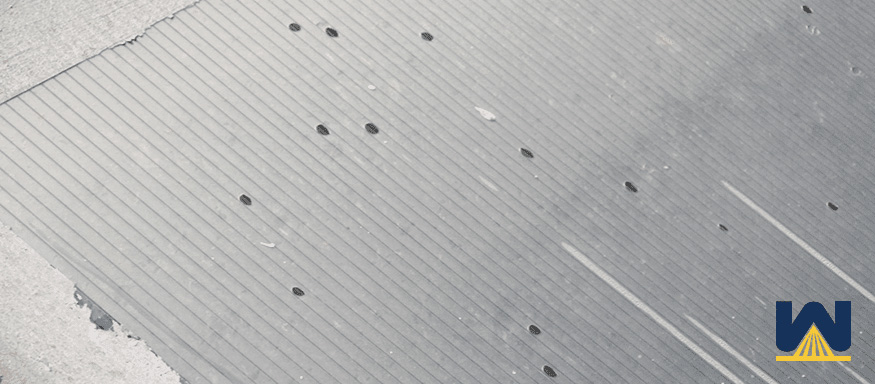The slew of roofing options available today can confuse even the most technical building owners.
Where do you start? Which one is best? How do you avoid choosing the wrong roofing option and having issues for years to come?
Decisions, decisions.
And when it comes to choosing the best roofing system to perform against hail, the differences can be tremendous.
Today we’re going to discuss the following roofing systems and discuss how they’ll perform against hail:
- BUR (built-up roofing)
- Metal
- Single-ply
- Spray Polyurethane Foam
Built-up Roofing
Built-up Roofing (or BUR) systems have been in use in the U.S. for over 100 years. These roof systems are commonly referred to as “tar and gravel” roofs.
Built-up systems are installed by alternating layers of asphalt or tar and supporting fabrics directly onto the roof. You can choose the number of layers (or plies) that are installed. The final layer of a built-up roofing system consists of stone or gravel.
How does BUR perform against hail?
If the BUR is gravel surfaced, it’s very resistant to the impact of hail because it has a surface layer of stone on top.
The weak part about BUR is the exposed flashings.
Flashings are anything that penetrates the waterproof membrane, such as:
- HVAC unit
- Skylight
- Drains
- Vents
Especially on an aged roof, your flashing is the most brittle, gets the most UV exposure and it’s not protected from UV reflected by the gravel surfacing.
Most flashings have a vertical surface of some sort that doesn’t have gravel on it:
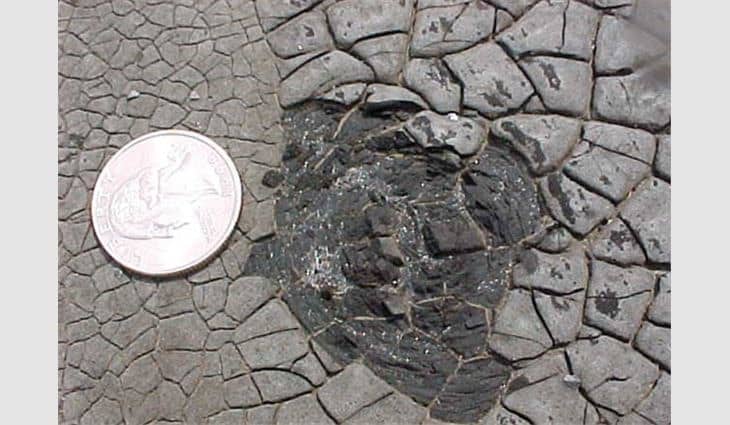
Hail can hit vertical flashings on a tar and gravel roof and penetrate.
Metal Roofing
Metal Roofing is one of the oldest commercial roofing systems on the market.
Most metal roofing systems use corrugated galvanized steel, although other materials such as aluminum or tin can also be used. After a metal roofing system is installed, a coating can be added for waterproofing, rust protection, and UV protection.
How does metal roofing perform against hail?
In a hail event, a possible scenario is the metal roof gets painted and a piece of hail chips the paint. In the same manner your car operates, when paint gets chipped, rust begins to form.
When rust forms, you’ve just exponentially increased the amount of weathering that roof surface is going to experience. Your roof might not leak, but it’ll probably start rusting, which reduces the service life of that roof panel.
Another downgrade to metal roofs against hail is that the profile of them involves crimping.
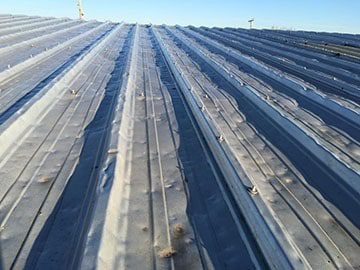
Crimp roofs use a series of metal sheets that’re attached from eave to ridge using an exposed fastening system.
The exposed fastening system, or “crimp” could be damaged by hail, creating a small hole, which can cause a leak.
Single-ply Roofing
Single-Ply Membranes are sheets of rubber and other synthetics that can be chemically adhered to insulation or ballasted creating a layer of protection on your commercial facility.
There are two main types of single-ply membrane commercial roofing: Thermoplastic Polyolefin (TPO) and Ethylene Propylene Diene Terpolymer (EPDM). They differ in their chemical makeup, how they are installed and the energy efficiency.
How does single-ply roofing perform against hail?
Single-ply membranes are relatively thin (60 mils thick), so they can be weaker than the other systems.
Newer single-ply’s can develop little cracks and it won’t leak, but if that same crack develops in an aged TPO or EPDM, especially if it’s already holding water, will cause a leak.
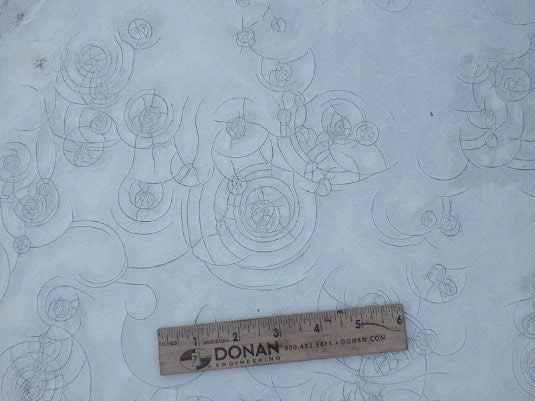
NOTE: The single-ply enthusiasts will say there are fleeceback membranes that can be adhered over plywood that’s virtually indestructible to hail. They’re right, but it costs around $20/sq. ft. Spray foam roofing costs around $5-$10 per sq.ft.
Spray Polyurethane Foam Roofing
Spray Polyurethane Foam, more commonly referred to as SPF, is a material that’s sprayed and expands into a foam, creating a monolithic layer across an existing roof.
While SPF roofing is not the most known type of roofing material, the technology has been around since the early 1960s for industrial, commercial, and residential facilities.
How does spray foam roofing perform against hail?
Spray foam roofs will indent and the surface can crack when being exposed to hail. However, with spray foam being laid down on average 1.5 inches thick, hail damage will not cause a leak.
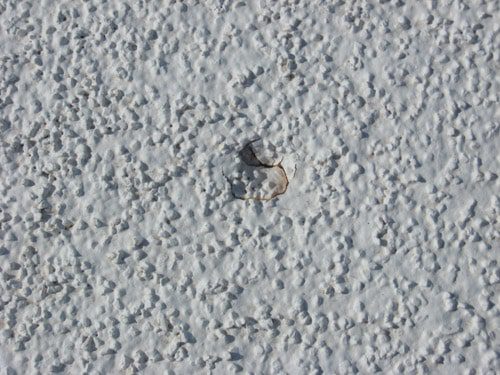
Spray foam is closed-cell, meaning water cannot travel laterally through the system. Water will not leak unless the full 1.5 inches is broken through.
Regarding hail damage, spray foam roofs can be recoated, or you can simply add sealant to the visible damage and you’re good to go.
The other forms of roofing require tear off and replacement of material; a MUCH higher cost.
Which Roofing System Performs Best Against Hail?
- Spray foam – won’t cause a leak and most easily/affordably repaired (not replaced)
- Metal – very strong, but it can be pinched or crimped, creating leaks
- BUR – the roof is resistant to hail, the flashings are not
- Single-ply – thinnest roofing material provides the easiest exposure to cracks

